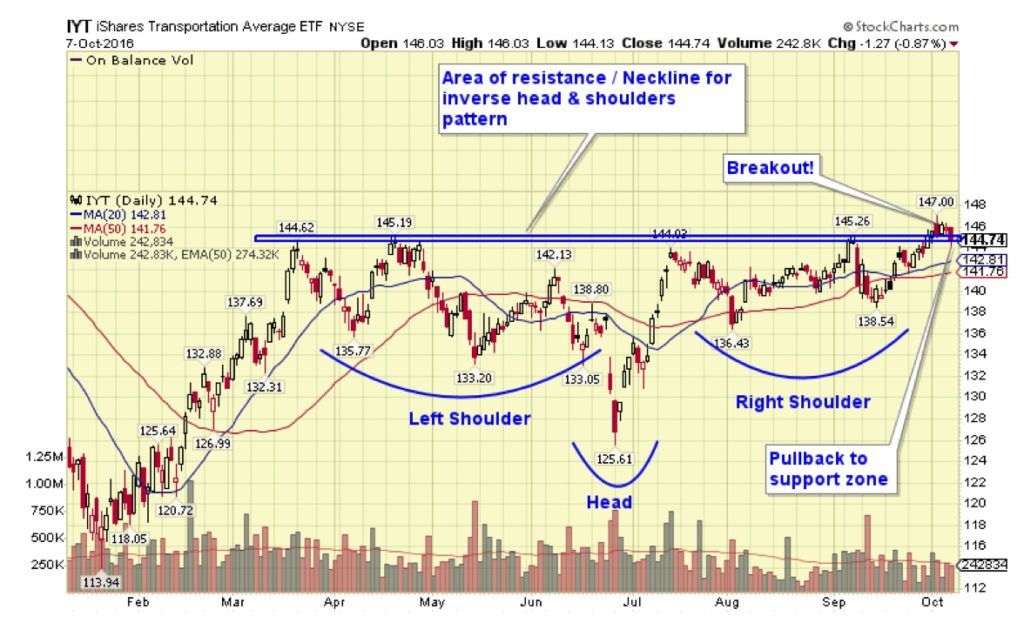While the universe of dividend growth stocks covers the complete breadth of the stock market, there is a strong concentration in particular sectors of the market. Specifically, there are concentrations in utilities (water, electricity and gas), regional banks, real estate investment trusts (REITs), transportation and energy.
(Yes, I know I’m leaving a bunch of sectors and stocks out. Like I said, DG stocks are found in every sector, but there are particular industries that lend themselves to continually growing earnings.)
So what to do when you find yourself with extra money to invest? Where should you put your money?
One way to narrow down which stocks to look at is to use sector ETFs. Whether you use technical or fundamental analysis, whether you’re looking for value stocks, high yielding stocks or stocks breaking out to new highs, using ETFs – exchange traded funds – to isolate sectors with those characteristics.
Now, don’t buy these ETFs looking for a focus on DG stocks – there are other ETFs for that. (I covered those a in mid-August and you can find the article on the website here.) But use these ETFs as a starting point to isolate sectors that are showing particular strength, either with fast earnings growth (which you can find on finviz.com) or with a strong price chart (I like stockcharts.com).
Here are some of the more popular ETFs with holdings that include several DG stocks:
| Sector | Ticker | Dividend Growth Holdings in ETF |
|---|---|---|
| Regional Banking | IAT | PBCT, CFR, PB, OZRK |
| Consumer Goods | IYK | PG, KO, PEP, CL |
| Real Estate | IYR | HCP, O, ESS |
| Transportation | IYT | NSC, CSX, JBHT, FDX, CHRW, EXPD |
| Food & Beverage | PBJ | SYY, GIS, ADM, TR, SJM |
| Energy | XLE | XOM, CVX, EOG, OXY |
| Financial | XLF | CB. SPGI, BEN |
| Industrial Goods | XLI | MMM, UTX, LMC, CAT, GD |
| Utilities | XLU | NEE, ED, ES, AWK |
| Healthcare | XLV | JNJ, MDT, ABBV |
| Retail | XRT | ROST, WMT, COST, CVS |
So how would you use this information? This strategy hinges on the fact that stocks within a sector move in sync with each other. So you can look for a sector (by looking at the ETF) that is behaving positively and use that knowledge to narrow down your search for DG stocks. For example, you can look for stocks that are breaking out to new highs above resistance or pulling back to support by finding ETFs that are breaking out above resistance or pulling back to support. You can also use this technique to find sectors and dividend growth stocks that have sold off and have relatively high yields.
Recently the Transportation ETF, IYT, has been behaving well by breaking out of an inverse head & shoulders pattern. Here’s the chart:
I’ve labeled the inverse had & shoulders pattern on the chart above so that you can see it. This pattern and the breakout is a very positive development for the transportation segment. Among the DG stocks in the transportation sector are the railroads CSX (CSX) and Norfolk Southern (NSC), the shipping companies FedEx (FDX) and J. B. Hunt (JBHT), and the logistics companies Expeditors International of Washington (EXPD) and C. H. Robinson Worldwide (CHRW).
Looking at the charts of these companies, I noticed that FedEx had a similar pattern. In fact, FDX’s breakout of the inverse head & shoulders pattern preceded IYT’s breakout. FDX is in the process of pulling back to the breakout point, which isn’t uncommon.
(Note: If I take a position in FDX – and I might – I would wait for a pullback closer to 169, which is where the neckline is. By taking the difference between the neckline (~169) and the low of the head (~145), and adding the difference to the neckline, you get a measured move for this particular pattern of 193.)
Since an ETF’s performance is driven by its components, it makes sense that a well-behaved ETF has at least one (and usually more) good performing individual stocks behind it. The description above is just one example of how ETFs can be used for dividend growth investing. By identifying good performing ETFs, you can find good sectors and dividend growth stocks in which to invest.

